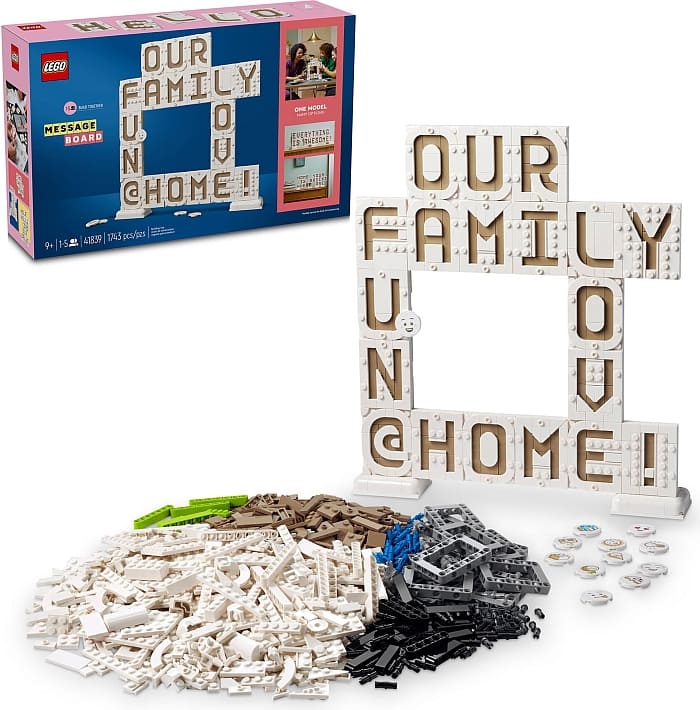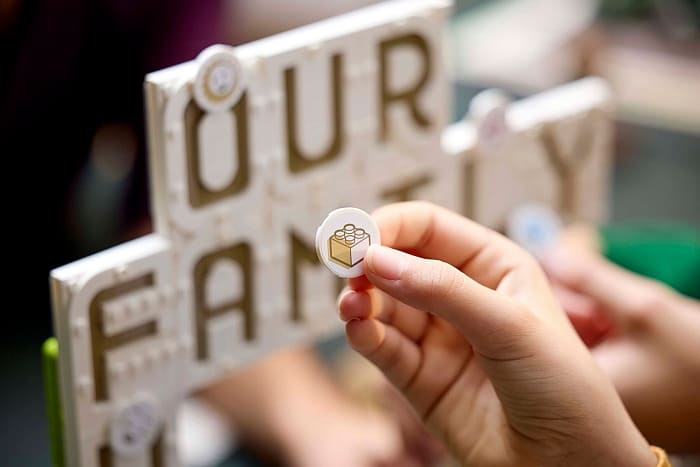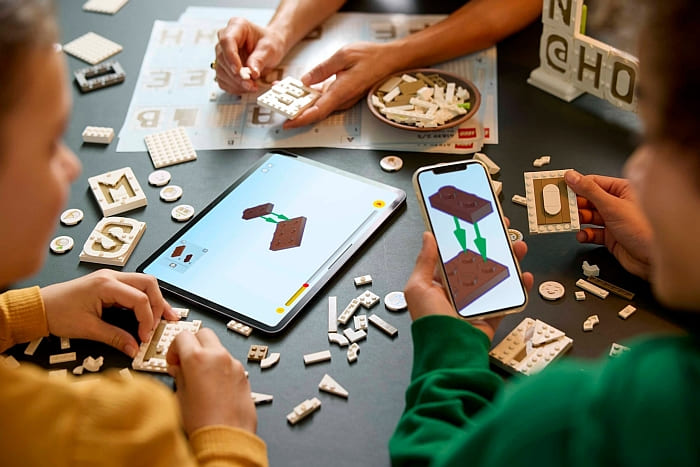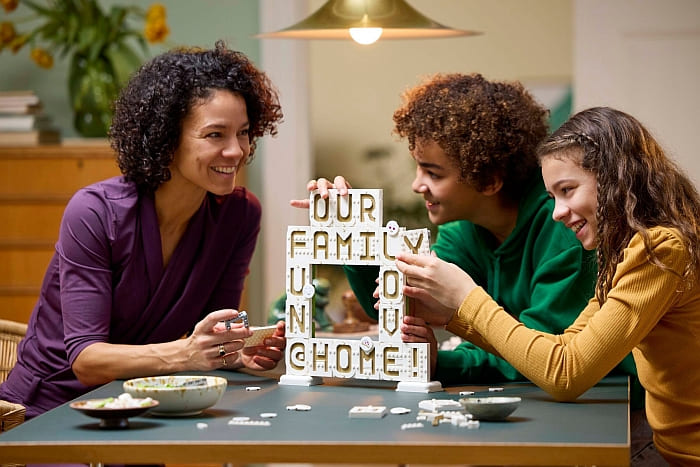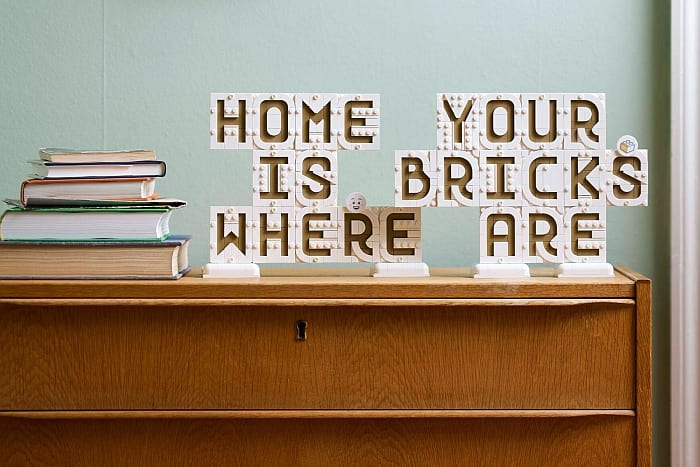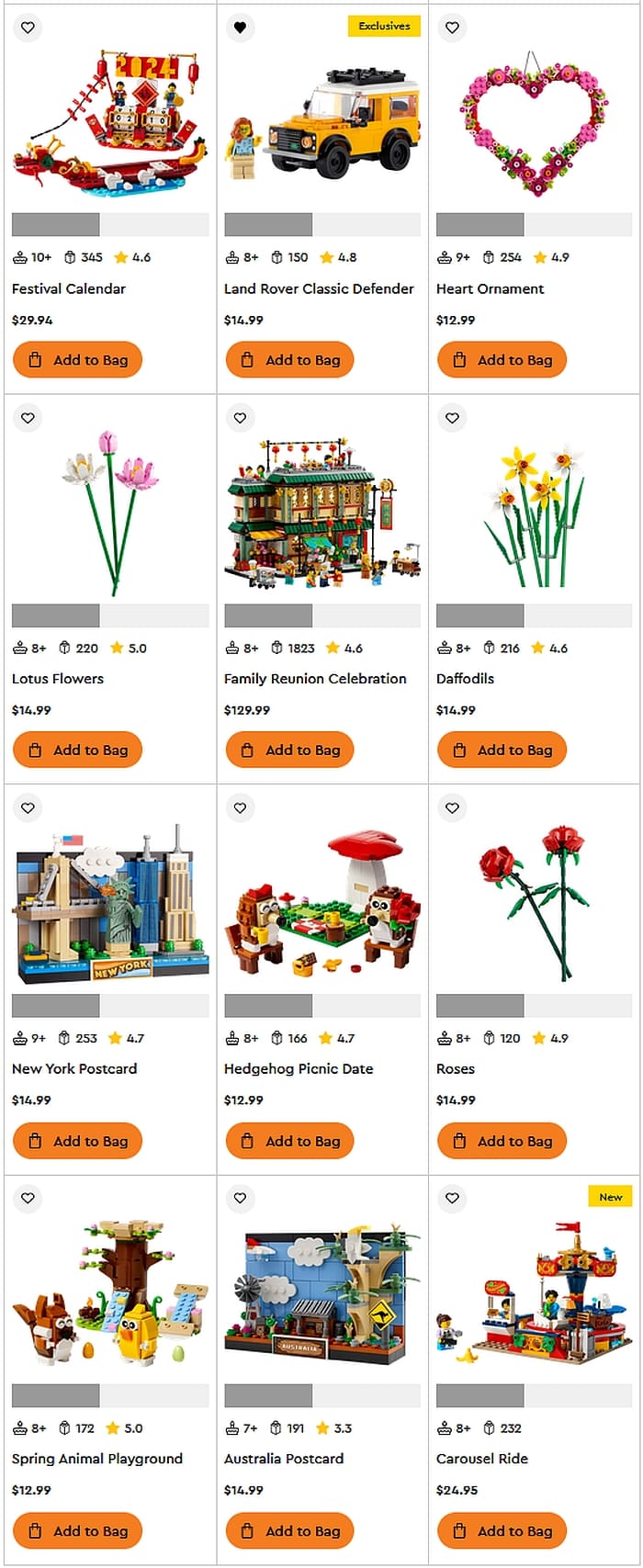The LEGO Friends collection has been celebrating outdoor adventures from the very beginning of the theme. The LEGO Friends Jungle Rescue sets were released back in 2014, followed by the LEGO Friends Adventure Camp sets in 2016, the LEGO Friends Forest sets in 2021, as well as miscellaneous sets with tree houses, campers, canoes, and many other ways of exploring nature.
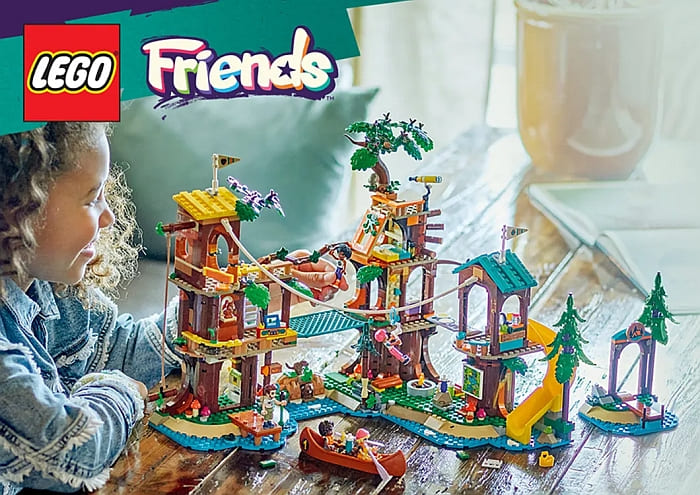
The LEGO Friends Adventure Camp collection was particularly noteworthy with the #41121 LEGO Friends Adventure Camp and the #41122 LEGO Friend Adventure Camp Tree House – both large sets with a great variety of settings, accessories, and play-features.
This year, LEGO is bringing back the LEGO Friends Adventure Camp collection with four new sets; the #42622 LEGO Friends Adventure Camp Archery Range, the #42624 LEGO Friends Adventure Camp Cozy Cabins, the #42626 LEGO Friends Adventure Camp Water Sports, and the #42631 LEGO Friends Adventure Camp Tree House.
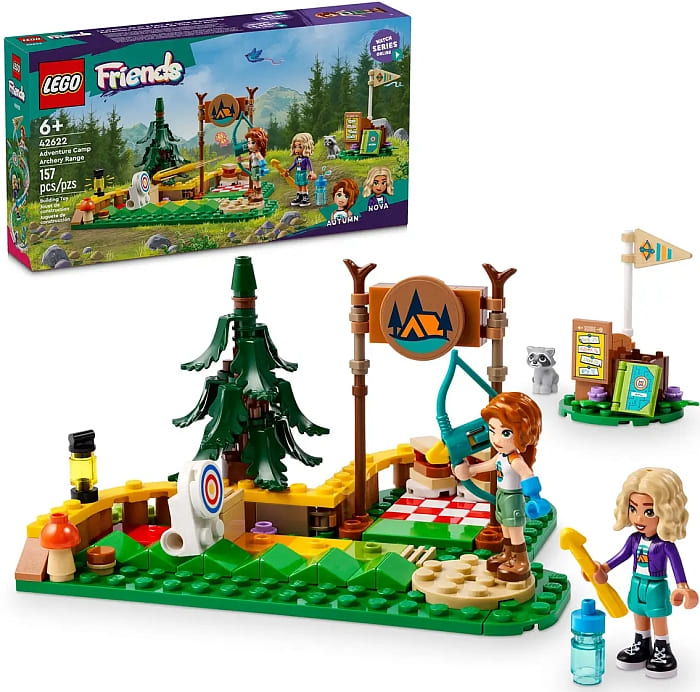
The #42622 LEGO Friends Adventure Camp Archery Range comes with 157 pieces and features a small target practice range with a color-coded difficulty scale to move the target back, a flip-down target, and a bow that can really shoot. There are also a bunch of camping-related accessories like a lantern, mushrooms, a brick-built pine tree, a picnic area, and more. The two mini-dolls are Autumn (with a prostatic arm) and Nova, and a cute raccoon is also included. This set is only $19.99 and is available at the LEGO Friends section of the Online LEGO Shop.
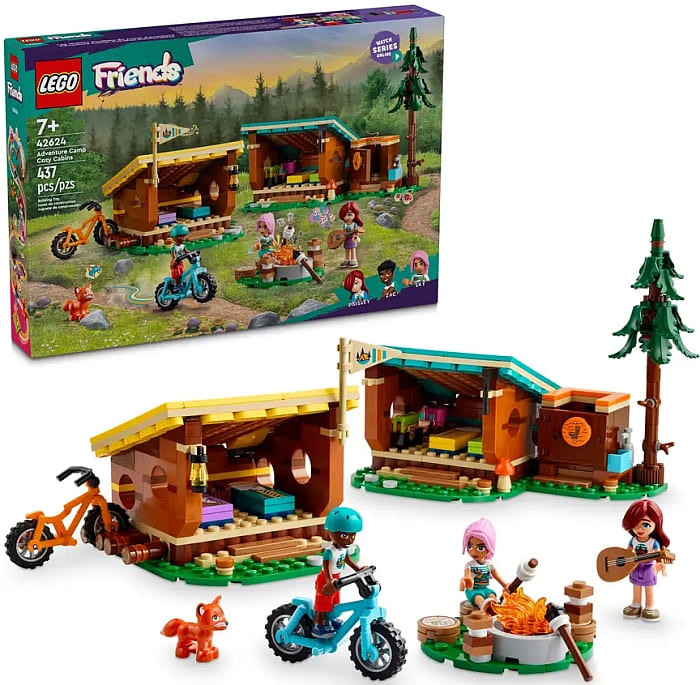
The #42624 LEGO Friends Adventure Camp Cozy Cabins comes with 437 pieces and features a couple of small buildable shelters with removable roofs for easy access as well as a toilet, there are also a couple of mountain bikes, a lute, a fox, a taller version of the brick-built pine tree, and a brick-built fire pit. The three mini-dolls are Paisley, Zac, and Sky. This set is $44.99, which I feel is a bit pricey for what you get. Around $35-$39 seems more fair, so you might want to wait a little to see if the set goes on sale. It’s available at the LEGO Friends section of the Online LEGO Shop.
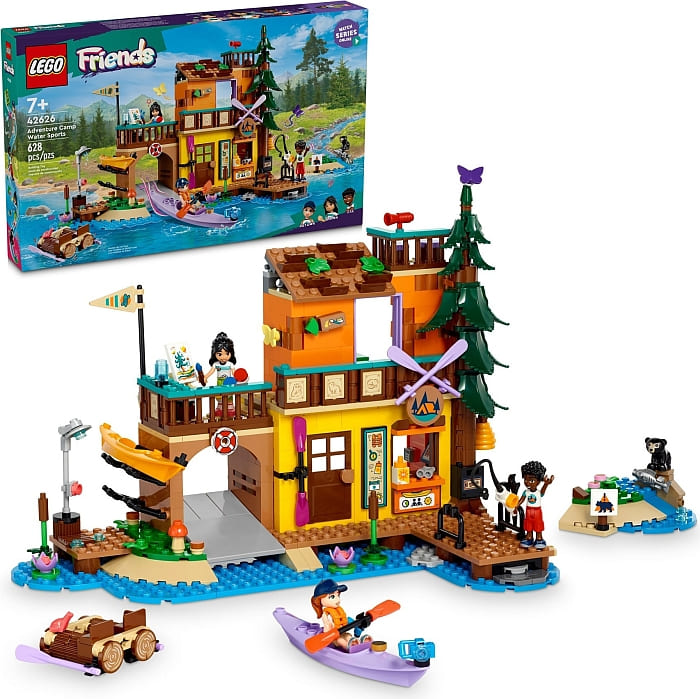
The #42626 LEGO Friends Adventure Camp Water Sports is the second largest set in the collection with 628 pieces. It features a water sports center with a lot of different activities! Mini-dolls can go kayaking and fishing, or build a water raft, or paint on the upper floor, and more. A small island addition is also included with a bear cub, a fish, and a butterfly, and there is also an even larger version of the brick-built pine tree with a beehive. The mini-dolls are Autumn, Liann, and Zac. The price is $69.99, which I think is reasonable for the size, play-features, and included characters and accessories. This set is available at the LEGO Friends section of the Online LEGO Shop.
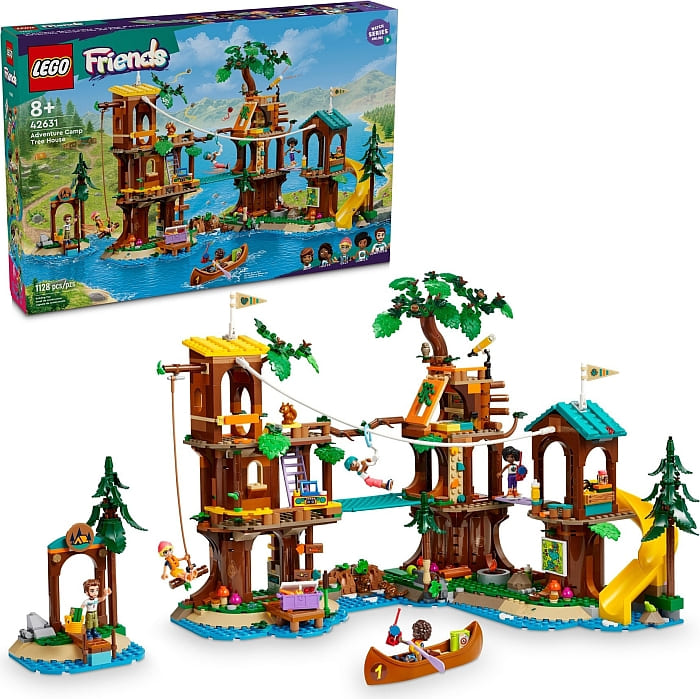
The final set in the collection is #42631 LEGO Friends Adventure Camp Tree House, which is also the largest with 1,128 pieces. It features a massive multi-story treehouse complex with adventures and activities at every nook and corner! There is a zip line, a slide, an obstacle course, a climbing wall, trapdoors, as well as activities like canoeing, and more. The five mini-dolls are Leo, Aliya, Jamila, Olly, and camp counselor Jonathan. There are also a number of animals, including an owl, squirrel, hedgehog, frog, and two beavers who are building a dam. This is the ultimate adventure camp set with so much to build, see, and do! Kids can have hours of fun, while adult LEGO fans can enjoy all the wonderful building techniques, colors, and unique elements. The price is $129.99, and I think it’s totally worth it. You can find the set at the LEGO Friends section of the Online LEGO Shop.
LEGO Friends sets featuring outdoor activities are almost always excellent. They often include rare elements, new animals, and lots of useful accessories. From these four sets, I feel that the #42631 LEGO Friends Adventure Camp Tree House is the best, but the other sets are nice too. I really like the color-scheme of the whole collection, and all the rare animals are always welcome!
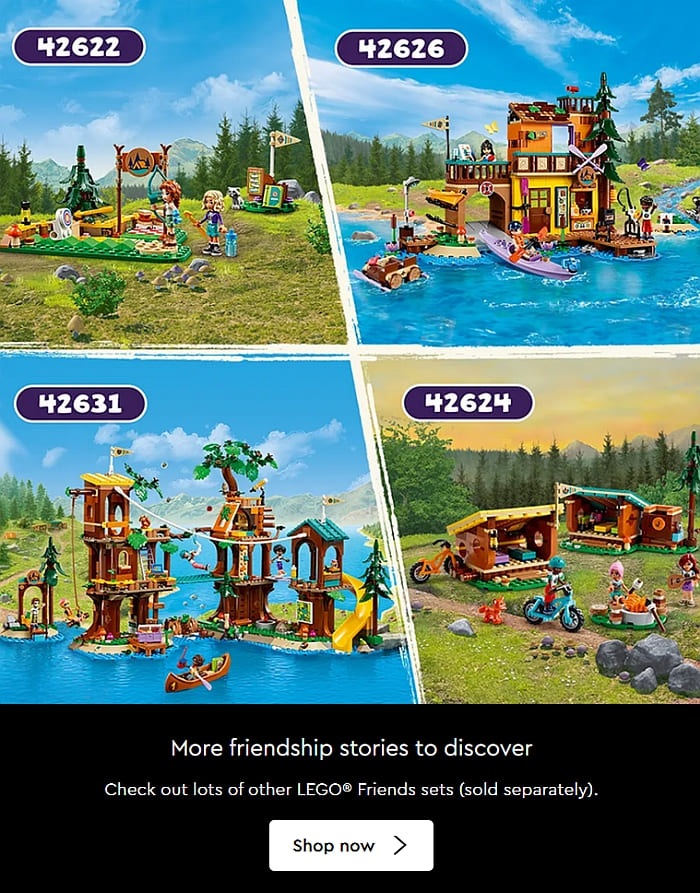
What do you think? How do you like the new LEGO Friends Adventure Camp sets? Do you have any of them already? Feel free to share your thoughts and own review in the comment section below!
And you might also like to check out the following related posts:




